People
U.K. Venice Biennale Pavilion Artist Sonia Boyce on Why She’s Already Expecting Backlash Against the Show
The artist sat down with Artnet News to discuss her work and its reception.
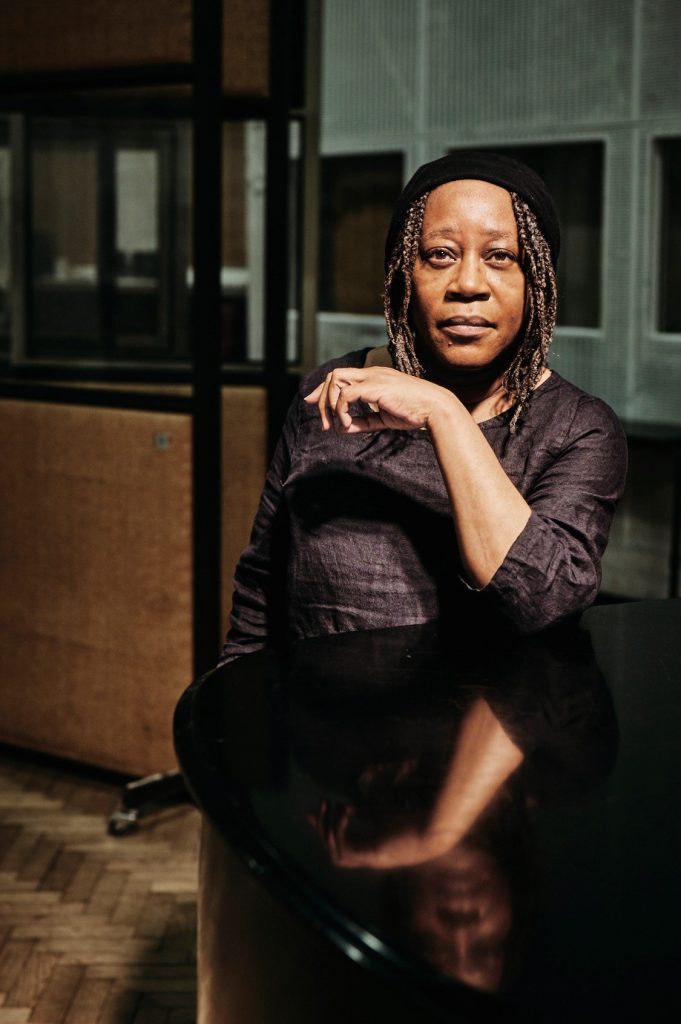
The artist sat down with Artnet News to discuss her work and its reception.

Melissa Smith

There was a moment early on in Sonia Boyce’s career when she decided that her life didn’t have to be the most important part of her work. Before that, Boyce had been making figurative drawings reflecting on her experiences as a Black woman. Because the art world so quickly embraced those pieces, made in the ’80s while Boyce was actively involved in the U.K. Black Arts Movement, her move shortly thereafter into “social practice,” for which she allowed a lot of other perspectives to shape her work, has been met with somewhat less enthusiasm.
Until now.
Next month, Boyce, now 60, will present her work at perhaps the most prestigious art exhibition in the world, the Venice Biennale, in a project commissioned by the British Council. And it marks the first time the United Kingdom has chosen a Black female artist for the role. (She is also currently included in the Serpentine exhibition “Radio Ballads.”)
In the end, the fact that it took so many years for this to happen speaks volumes about the lack of access for Black artists (and especially Black female artists) in the art world. But is there more to it than that? What does Boyce’s inclusion signal for artists who choose to talk about race and gender outside the context of their own biographies, leaving more room for nuance and interpretation? In her first collaborative piece, done the late ’90s, Boyce documented strangers donning an Afro wig; in 2018’s Six Acts, she asked performance artists to go to a gallery and reevaluate race and gender representation within its historical painting displays.
Instead of simply telling people what to think, how will Boyce’s work—which makes the complexities around race, gender, and sexuality everyone’s issue—live on as the kind of work that “matters”?
On the occasion of the biennale, Boyce told Artnet News about her practice and why it shies away from easy answers to complex questions.
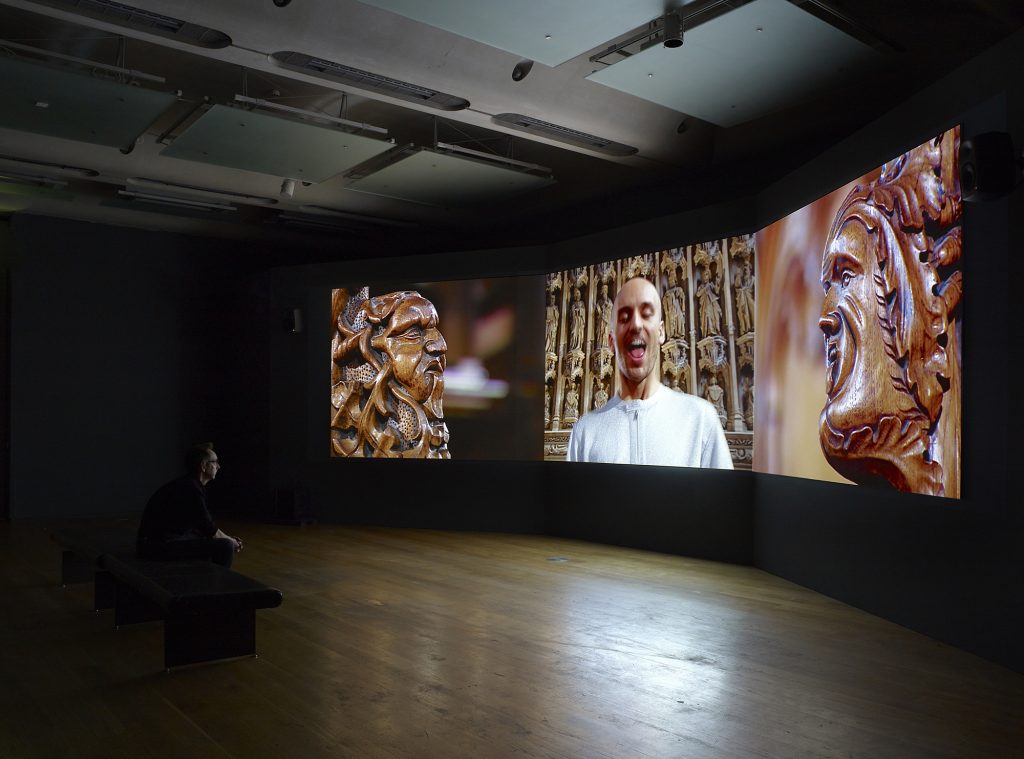
Sonia Boyce, For you, only you (installation view, 2007). © Sonia Boyce. All Rights Reserved, DACS/Artimage 2022. Photo: Mike Pollard
You’ve mentioned how it’s been a challenge projecting yourself onto the space at the Venice Biennale. Is that due to who has been chosen in the past? Or, perhaps about how people used to question your nationality growing up?
Most of the artists that I’ve been to see in the British Pavilion are artists that I really admire, that are already on the international stage in a particular way. And because I haven’t quite seen myself in that mode—not that I’ve not done things across the world—I just haven’t seen my career in that sense.
[Until recently], I haven’t been that engaged with the question of nationhood and national pavilions. But I really started to think about the anachronism of having national pavilions when art cuts against that grain of ideas on nationhood. It’s only since the invitation that people keep asking me about Britain. There are all sorts of questions within that question. I do think part of the question, as it is posed to me, is about [how] I’m Black and British, and what does it mean to “carry the flag”?
When I was growing up, [I was] always being asked, “Oh where are you from?” and saying “I was born in London.” And people then say, “Oh no, no, no, where are you really from?” “Well I’ve just told you where I’m really from.” The truth is I was born in London and I’ve lived the vast majority of my life in the U.K.—that is a fact.
You also talked about how you’ve felt some pressure to make something to represent the different facets of art-making in the U.K. How do you deal with that pressure? How does it ultimately shape your approach?
That’s an impossibility, for a start. I think this is a question about the burden of responsibility. Kobena Mercer wrote a great essay in 1994 called “Black Art and the Burden of Representation,” about how there is a responsibility placed on the shoulders of Black artists to be representatives, for them to carry the weight of all Black artists, all Black people, without any consensus.
For me, what that becomes is that it doesn’t matter what I make, somehow; because I’m there as a fragment of “all of them.” What that also means is you don’t need to look at anyone else because this one figure represents “all of them.” “They’re all the same,” basically. The implications are really problematic, particularly within the context of this field that we’re in, which is about individual expression and finding new grounds. What we do as artists is about finding new spaces. But then you’re constantly pulled back to this place where it doesn’t even matter what you make.
I think within the discussion about the curatorial narrative for the whole biennale, I’m waiting for the backlash: “all these women”; “all these blacks”; “haven’t we done that yet?”; “when can we get back to normal?”; “we don’t need to do it again.”
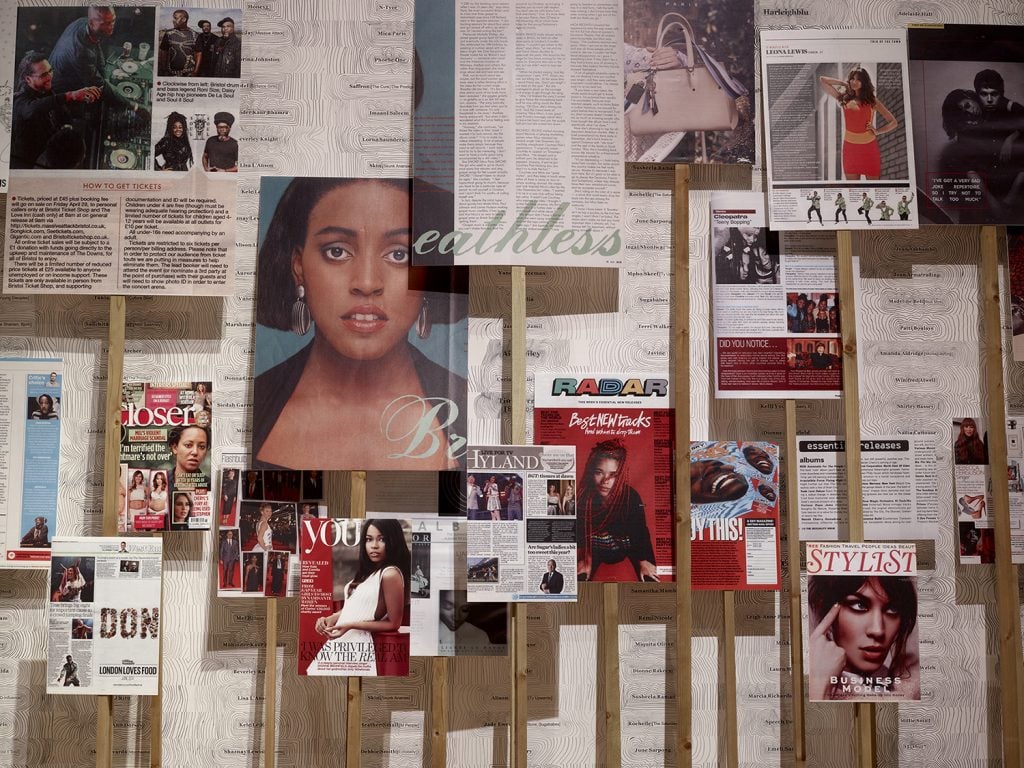
Sonia Boyce, Devotional (2018). © Sonia Boyce. All Rights Reserved, DACS/Artimage 2020. Image courtesy Manchester Art Gallery. Photo: Mike Pollard
You’ve also been honest about your trepidation around exhibiting in Venice, specifically saying that you were worried it’ll be a failure. What do success and failure mean in this context?
Failure sits within all of my projects because there is a huge risk to the work that I do. Sometimes the work does fall flat on its face because I’m showing work that is in the process of being made, which is slightly different to if I had a practice where I might be a painter or a sculptor, where there may be a range of paintings and I only keep the ones on the wall that are really working well. The very nature of my practice is that it’s unfolding in front of me and I commit to it and then I have to try and make it work as best it can. And because it’s always unscripted and improvised, I never know what’s going to emerge or how I’m going to treat the material that I’m offered during the process.
The experience of the Black Atlantic has always heavily factored into your practice. Is translating that experience on this tremendous stage tied to your idea of success at all? Or how do you look at the responsibility?
The question of the Black Atlantic is about the outcomes of slavery, colonialism, industrialization, and it comes out of all of those things. And it is where African diasporic culture meets Western culture and the mix of that. So the question about responsibility is something I return to time and time again because it speaks to our current conditions. It’s not something about how I’ve got here; it’s how we’ve all got here, and how we are trying to deal with what we perceive as almost an irreconcilable difference that has its roots in the question of the Black Atlantic and Modernism. This is a very complex subject. I would refute the question of it being my responsibility, or the responsibility of the Black subject. It is a shared responsibility—across those who are in the spaces of Western culture, at least.
From a personal standpoint, would you say that you’ve already achieved a certain amount of success by simply being selected, in that it’ll help your commitment to giving a wider audience this experience?
There are some artists who will be shown at Venice who have been shown many times. This is my second time being shown during the Venice Biennale. Well-known artists continue to be shown not only in Venice but in many places around the world. That’s how the field works. If we think in book terms, how many books are there on Cézanne? Or how many books are there on Picasso? Now it might be that Picasso may have shown in Venice at some point, but it didn’t halt him [from] being shown and being celebrated time and time again, as a gathering of acknowledgement of the interest in this work. Success in the arts is not a one-off thing. It’s a growing sense of interest in a way a particular artist is making, and that value accrues.
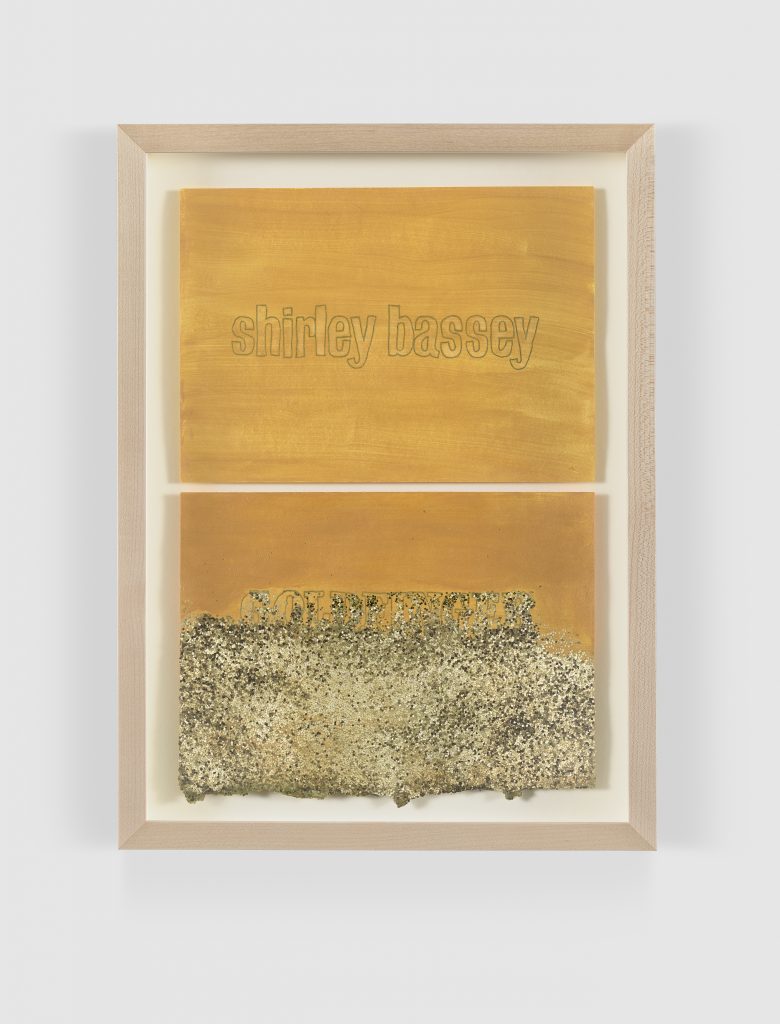
Sonia Boyce, Shirley Bassey/Goldfinger (2021). © Sonia Boyce. All Rights Reserved, DACS/Artimage 2022. Photo: Prudence Cuming Associates
In a recent article about this in the New York Times, Alberta Whittle said she once heard a journalist say: “When are we going to stop seeing art by Black artists? There’s enough now,” to elucidate a point about how many people still think that this interest is temporary, and how she has “great reservations about how ready people are to take work by Black and brown artists seriously.” How do you feel about this?
What is valuable? What conversations are valuable to be had? What experiences are we valuing or not valuing? Are these just temporary measures until we “get back to normal”? What I’ve found is that these questions of so-called “other voices” just keep returning because the voices are doing things and saying things that have to be said. The question of race, the question of gender, of sexuality, of ecology—what can be called “issue-based” subjects—all of these things are constantly emerging, and are irrepressible. So how do we embrace them? How do we push forward with the awkwardness of some of these questions? I think what the institutional frameworks are trying to do is hear that. But it’s not easy for institutional structures to shift.
You’ve spent a long time struggling for acknowledgment within certain formalist practices. Which artists are the ones you consider yourself in dialogue with?
The artists that I return to time and time again are Lygia Clark, David Medalla, William Morris, Andy Warhol, Susan Hiller.
You could say I have these two modes: one is about the form and discussions about the materiality of work, what form and shape the work takes. And then there’s subject matter. There’s always this dance between subject matter and form for me.
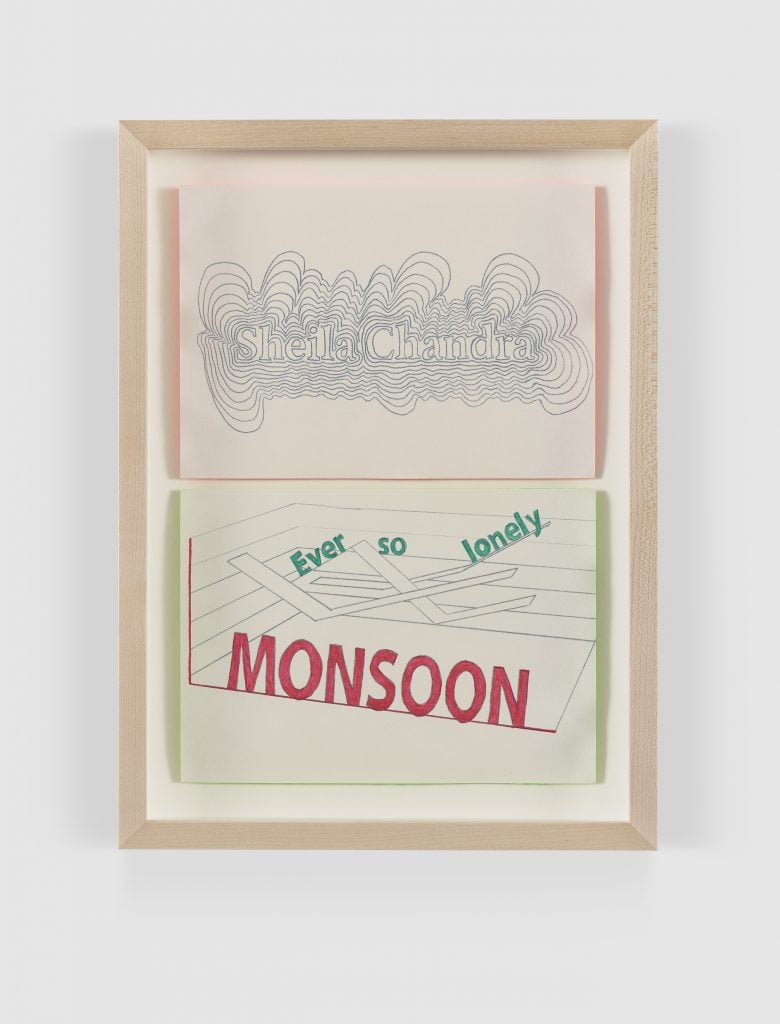
Sonia Boyce, Sheila Chandra / Ever so lonely MONSOON (2021). © Sonia Boyce. All Rights Reserved, DACS/Artimage 2022. Photo: Prudence Cuming Associates
Why do you think people still “mothball” or pigeonhole you based on what you were making in the 1980s during the British Black Arts movement, which, as you’ve said, only lasted around 3 years?
Because it was an unexpected eruption that happened in the U.K. and was fortunate enough to be in exhibitions and in dialogue with people who very quickly became recognized. This groundswell of artists of the Black Arts Movement came and went fairly quickly, and then kind of went underground and resurfaced but not necessarily calling itself the Black Arts Movement any more. So people don’t know how I’ve gone from what I did then to what I’m doing now because what I’m doing now doesn’t easily fit under the terms of Black art in the way that it was presented in the ‘80s. I’ve been exhibited in many places around the world and the work has gathered pace in a slightly different direction, much more aligned to art as social practice. But there isn’t an identifiable group for art as social practice that I’m placed within, so people don’t quite know where to place me.
I don’t know what people are expecting this year’s particular Venice Biennale to be about. For me, based on Cecilia Alemani’s vision, the thing I get is that it’s about igniting the prospect that we can imagine differently. I think the narrative that people will want to take away is this is a Feminist moment, [when in fact] the work is about the imagination.